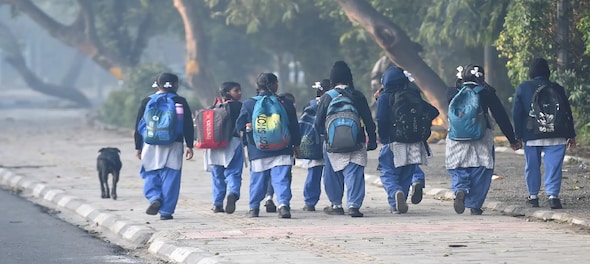
Ahead of the interim Budget that Union Finance Minister Nirmala Sitharaman is set to announce on February 1, the government on January 29 released a report titled ‘The Indian Economy: A review’ which pointed to the increased ratio of females attending school and colleges over the past few years.
According to the report, the female gross enrollment ratio (GER) in higher education quadrupled from 6.7% in 2000-01 to 27.9% in 2020-21.
“More girls are now in higher education than boys. The gross enrollment ratio (GER) for girls is 27.9% in 2020 vis-à-vis 12.7% in FY10. Total enrollment in higher education was 3.4 crore in 2014. It has gone up to 4.1 crore students in 2023,” the report highlights.
Also, female GER in senior secondary education has more than doubled from 24.5% in the financial year 2004-05 to 58.2% in 2021-2022, that is, in 18 years, the report said.
It must be noted that the Centre is not going to present the Economic Survey this year as it is an election year. Instead, it has released the 'Indian Economy–A Review', which is prepared by the office of the Chief Economic Advisor (CEA) V Anantha Nageswaran.
Reflecting on the state of education since the Narendra Modi government was elected in 2014, the report points out that the number of universities was 723 in 2014, and that has increased to 1,113 in 2023.
The report further asserted that women are now enrolling more than ever in tertiary education. The Eleventh Edition of the CII-Wheebox India Skills Report based on the National Employability Test conducted by Wheebox2 shows India’s youth employability is at 51.3%, up from 33% a decade ago.
‘The Indian Economy: A review’ report also gave a snapshot of reforms that took place in the education sector in the past decade.
Here are the highlights
-National Education Policy introduced in 2020 – structural reform in education
-National Curriculum Framework for Foundational Stage (NCF FS) launched on October 20, 2022. Based on this, learning teaching material (JaduiPitara) and textbooks have been launched in 2023
-PARAKH (Performance Assessment, Review, and Analysis of Knowledge for Holistic Development), launched in 2023 for setting norms and implementing activities related to student assessment.
-Scheme for 14,500 PM-SHRI Schools to emerge as model schools for NEP
-NIPUN Bharat Mission for universal acquisition of foundational literacy and numeracy by 2026-27
-Expansion of digital learning through Swayam Prabha and MOOCs – 200 channels with more than 13,000 contents produced for telecast in 31 languages.
-Achievements of Samagra Shiksha from 2018-19 to 2023-24
-3,062 schools upgraded at elementary, secondary and higher secondary level
-235 new residential schools and hostels opened
-97,364 schools strengthened, including additional classrooms
-1.2 lakh schools covered under ICT and digital initiatives
-8,619 Schools covered under vocational education
-28,447 Separate girls’ toilets constructed
Also Read: Nirmala Sitharaman to equal the record of former PM Desai by presenting 6 budgets in a row
(Edited by : Amrita)
Check out our in-depth Market Coverage, Business News & get real-time Stock Market Updates on CNBC-TV18. Also, Watch our channels CNBC-TV18, CNBC Awaaz and CNBC Bajar Live on-the-go!


Lok Sabha elections 2024: Baramati to Mainpuri, key battles in phase 3
Apr 30, 2024 7:01 PM
From Amethi to Mumbai South — Lok Sabha seats where parties are yet to announce candidates
Apr 30, 2024 6:39 PM
Diamond rings, fridge, TVs: Bhopal voters to get exciting prizes to boost turnout in Lok Sabha polls
Apr 30, 2024 6:35 PM
This Bihar district has its own app to help voters during Lok Sabha election
Apr 30, 2024 4:02 PM

